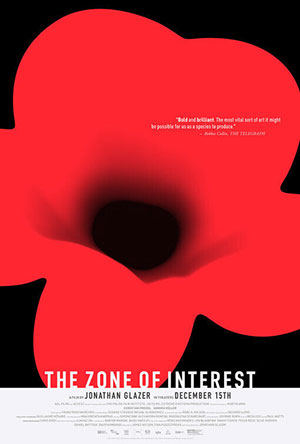I don’t consider myself deeply knowledgeable about movies. I enjoy the good ones and am bored with the dull ones. I find most films adapted from novels not nearly as fulfilling as the text narratives.
The films I find most intriguing are the ones that tell a story in a cinematic way. I love a film like Chaplin’s Modern Times because it tells its story in terms of what one sees without words. To watch the little tramp on an assembly line allows us to see a life—I think—in a unique way. What most interests me about movies is the different ways a story is told—text as contrasted with film.
I recently saw the movie called Zone of Interest, (based on a book by Martin Amis) which is one of the most unusual films I have ever seen, and, not beside the point, one of the most disturbing. It has been nominated for 5 Academy Awards, including Best Picture and Best Director.
The story is about the German Commandant [Rudolf Höss] of the notorious Auschwitz concentration camp in Poland during World War Two. The commandant and his wife, Hedwig, and their children are living a “normal” middle-class life just behind the wall of Auschwitz. We see the walls, and the barbed wire above the walls.

Their family life is in no way unusual, except they are living right next to horrific atrocities. 1.1 million people were murdered next door. Very slightly do we understand that these people do know what is happening, but just barely. Rudolf Höss, who runs the camp sweetly reads to his children at night. An older brother locks his younger brother in a greenhouse. It is innocent fun until the old boy makes the hissing sound of poison gas. The wife models a fur coat taken from a prisoner who has just been murdered.
Most powerfully, as we watch the ebb and flow of the family’s ordinary life, we hear what is happening beyond the camp walls: screams, gunshots, commands, “Go drown him in the river.” At a distance, we see smoke rising from the oven smokestacks in which thousands of murdered people are being cremated, at times two thousand an hour. We see a passing train that contains humans being led to slaughter. We don’t see the people, just the train.
The film is about the capacity of people to ignore — or so they act — the terrible things that are being done to their fellow human beings. We are not shown the terrible things, rather we hear them and see the evidence from a distance. It shows us that even as we continue our lives, we often are, at some level, aware of what is happening and choosing to ignore it.
The film, unlike a written story, shows and sounds how evil happens — by acting as if it did not exist. It’s an extraordinary piece of narration in which mere words won’t do.
See it. Listen to it.